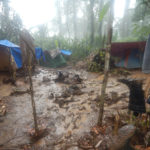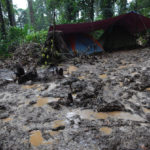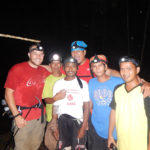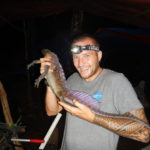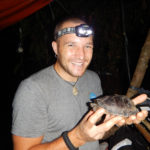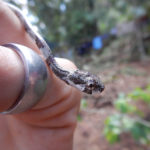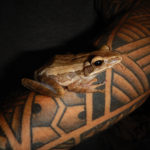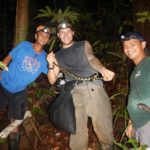Herpin’ for Conservation III
-
They all come out at night…
In a tropical region, the lush jungle, hot and humid climate, and high volume of rain usually make for the most productive herpetological field surveys, or the best “herping” (searching for reptiles and amphibians). Some people go fishing in their free time, but us “crazy” amphibian and reptile people go herpin’. And some times, as in this case, you are lucky enough to travel across the world on biodiversity conservation research trips. I was like a kid in a candy shop in the forests of Samar Island!
Since a majority of the species of amphibians and many reptiles are nocturnal, night surveys are often one of our primary activities for finding local biodiversity. These surveys are when we get to work and venture out into the jungle. First things first though, we always start the evenings activities with a wonderful, hearty, Filipino dinner, which usually includes about nine cups of white rice with some combination of pork adobo, fish, canned tuna or corn beef. Once dinner is over and the sun is set, the nine million cicadas that are screaming through what can only be described as miniature bullhorns will slowly conclude their concert, and the jungle settles to nearly pitch black. This is when the real fun begins. We strap on headlamps, grab a snake hook and our trusty machetes (there’s no pampered, premade trails in this forest), and start hiking. The jungle really does come alive at night. It is simply amazing. A chorus of frogs surrounds you: hundreds, if not thousands of them, all calling from their own little microhabitat. Each species has their own distinct call, so you learn to recognize each one in an attempt to distinguish which frog is calling from where and whether it is on leaves of banana trees three–five meters high, in the holes of tree trunks, on rocks near a stream, or hiding under leaf litter on the forest floor. As we hike, we are scanning our spotlights on every single branch, leaf, and trunk of every tree or plant in our close proximity. Occasionally, we get lucky and find a mangrove snake out cruising for dinner, or a stunning, coiled-up pit viper perched up in a tree, or even a Sailfin lizard sleeping perfectly on a tree branch overhanging a waterfall. On the best nights we hit the jackpot, and can’t seem to walk five feet without seeing eight different frog species, a gecko or crested lizard, or a couple snakes. Other nights are different, and at times we find ourselves out for hours, hiking and scaling cliffs, falling (gently) in streams, getting cut and scratched by thorny cycads, and we return back to camp without seeing more than a handful of the most common species of frogs. This thrilling experience gets repeated every night for the entire trip.
On a trip such as this that lasts many weeks, we will work to survey different habitats and regions of a mountain. Every week or so, we will set up a new base camp in a different region of the jungle. Whether it is at an elevation a couple hundred meters higher, or maybe on the other side of the mountain, each move brings a new ecosystem and often a new diversity of fauna and flora.
Continue the adventure in Herpin’ for Conservation IV
Missed my earlier blogs? Start the series here!

